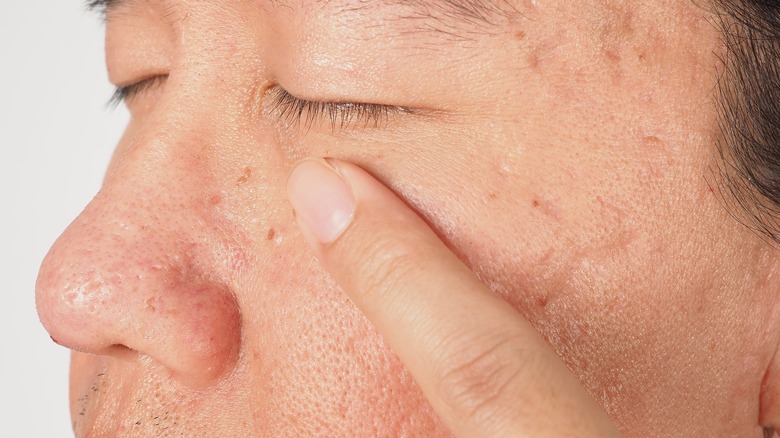How To Deal With A Tricky Eyelid Skin Tag
Skin tags are natural, albeit frustrating, which is a fact of life for many people. The United Kingdom's National Health Service (NHS) explains that they are made of collagen and blood vessels with skin enclosing them. And though they are more common in people with Type 2 diabetes and the elderly as well as pregnant women, anyone can develop a skin tag.
Luckily skin tags are benign, as stated by Harvard Health Publishing. The collagen and blood vessels hang off stalks, giving skin tags the dangling, movable traits familiar to those who live with them. The NHS also notes that skin tags can be found between folds of skin, where layers rub together.
A person with skin tags should consider removing them if they affect their self-esteem or snag on clothing and jewelry, which can cause bleeding. However, certain skin tags can pose additional problems. The experts at Medical News Today state that skin tags on the eyelid may block vision depending on their specific location. But as tempting as it might be to remove them yourself, experts advise against it, especially in areas deemed delicate, like the eyelids.
Consult a physician
There are countless online tutorials and home kits that claim to remove skin tags safely. However, the Cleveland Clinic outlines numerous reasons why home removal isn't a good idea. For starters, these methods can lead to excessive bleeding, scarring, and even infection. They can also cause a person to remove a growth that is not necessarily benign, which may be more concerning, such as a cancerous growth.
Therefore, it is best to contact a medical professional if a skin tag must be removed, as suggested by Harvard Health Publishing. Trained medical professionals, like dermatologists in these cases, have several methods they can use to remove skin tags that are not available to the general public. And, more importantly, they can ensure that the growth they're removing is in fact a benign skin tag.
Cryotherapy, for example, is one removal technique through which the dermatologist freezes off the skin growth. There are some home kits that claim to do the same thing, but a dermatologist's version is effective in one application rather than multiple attempts. Other doctors may opt for electrocautery, in which they burn the tag off with an electric needle or probe. Aside from these options, they may cut the skin tag off with traditional blades instead.


